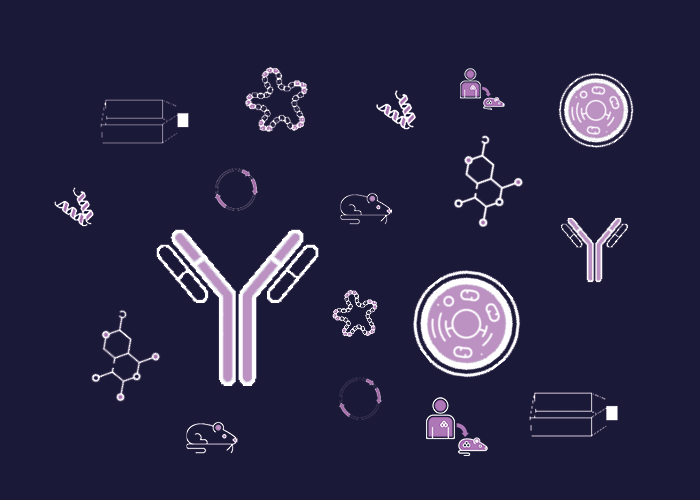
Cat. #151520
CDH5(PAC)CreERT2 Mouse
Cat. #: 151520
Sub-type: Mouse
Availability: 8-10 weeks
Disease: Cancer
Model: Conditional KO
This fee is applicable only for non-profit organisations. If you are a for-profit organisation or a researcher working on commercially-sponsored academic research, you will need to contact our licensing team for a commercial use license.
Contributor
Inventor: Ralf H. Adams
Institute: Cancer Research UK, London Research Institute: Lincoln's Inn Fields
Tool Details
*FOR RESEARCH USE ONLY (for other uses, please contact the licensing team)
- Tool name: CDH5(PAC)CreERT2 Mouse
- Research fields: Cancer;Developmental biology;Genetics;Neurobiology;Tissue-specific biology
- Tool sub type: Mouse
- Disease: Cancer
- Model: Conditional KO
- Conditional: Yes
- Conditional description: Conditional Cre-ERT2 expression under Cdh5(PAC) promoter in endothelial cells; inducible Cre activity by treatment with hormone (tamoxifen), inducing translocation of Cre-ERT2 to nucleus.
- Description: Cdh5(PAC)-CreERT2 enable efficient inducible conditional recombinase expression in embryonic and adult endothelial cells (tissue-specific loxP knockout/knockin/transgene). The Cdh5(PAC)-CreERT2 mouse is an ideal tool in the study of gene function in angiogenesis, atherosclerosis and neovascularisation.
- Genetic background: A Cdh5(PAC)-CreERT2 transgene vector, containing a genomic Cdh5(PAC) promoter fragment fused to a CreERT2 cDNA, was injected into fertilised embryos (C57BL/6 or FVB/N). Founder lines were back-crossed to establish mice heterozygous for the Cdh5(PAC)-CreERT2 transgene.
- Phenotype: The Cdh5(PAC)-CreERT2 mouse exhibits tissue-specific expression of an inducible Cre-ERT2 fusion protein, enabling tamoxifen-induced Cre recombinase activity in vascular endothelial cells.
- Zygosity: Heterozygous
- Production details: A Cdh5(PAC)-CreERT2 transgene vector, containing a genomic Cdh5(PAC) promoter fragment fused to a CreERT2 cDNA, was injected into fertilised embryos (C57BL/6 or FVB/N). Founder lines were back-crossed to establish mice heterozygous for the Cdh5(PAC)-CreERT2 transgene.
- Additional notes: The Cdh5(PAC)-CreERT2 mouse exhibits tissue-specific expression of an inducible Cre-ERT2 fusion protein, enabling tamoxifen-induced Cre recombinase activity in vascular endothelial cells. Administration of tamoxifen induces nuclear translocation of the Cre-ERT2 fusion protein, and subsequent Cre recombinase activity, allowing knockout/knockin/transgene studies of loxP-flanked genes in vascular endothelial cells. Non-induced Cdh5(PAC)-CreERT2 mice demonstrate no Cre recombinase activity, while tamoxifen-induced Cdh5(PAC)-CreERT2 mice demonstrate high penetrance in vascular endothelial cells (95%+).
Handling
- Shipping conditions: Embryo/Spermatoza- Dry Ice
Target Details
- Target: Estrogen receptor (ERT2) under the vascular endothelial cadherin (Cdh5(PAC)) promoter.
References
- Machi et al. 2024. Front Cell Div Biol. 12:1-15. DoI: 10.3389/fcell.2024.1407097.
- Brart et al. 2011. J Exp Med. 208(6):1267-78. PMID: 21576386.
- Lipid phosphate phosphatase 3 enables efficient thymic egress.
- Luna-Zurita et al. 2010. J Clin Invest. 120(10):3493-507. PMID: 20890042.
- Pitulescu et al. 2010. Nat Protoc. 5(9):1518-34. PMID: 20725067.
- Robson et al. 2010. Dev Dyn. 239(9):2435-42. PMID: 20652948.
- Integration of a Notch-dependent mesenchymal gene program and Bmp2-driven cell invasiveness regulates murine cardiac valve formation.
- The TGF type II receptor plays a critical role in the endothelial cells during cardiac development.
- Inducible gene targeting in the neonatal vasculature and analysis of retinal angiogenesis in mice.
- Wang et al. 2010. Nature. 465(7297):483-6. PMID: 20445537.
- Ephrin-B2 controls VEGF-induced angiogenesis and lymphangiogenesis.
- Mahmoud et al. 2010. Circ Res. 106(8):1425-33. PMID: 20224041.
- Pathogenesis of arteriovenous malformations in the absence of endoglin.
- Bazigou et al. 2009. Dev Cell. 17(2):175-86. PMID: 19686679.
- Integrin-alpha9 is required for fibronectin matrix assembly during lymphatic valve morphogenesis.
- Benedito et al. 2009. Cell. 137(6):1124-35. PMID: 19524514.
- The notch ligands Dll4 and Jagged1 have opposing effects on angiogenesis.
- Srensen et al. 2009. Blood. 113(22):5680-8. PMID: 19144989.
- DLL1-mediated Notch activation regulates endothelial identity in mouse fetal arteries.


